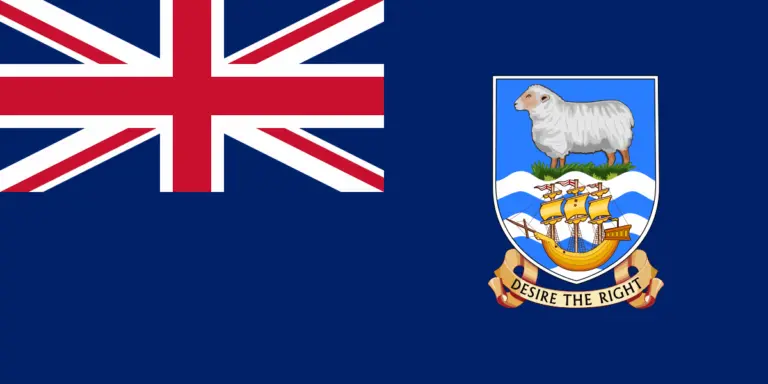
A Brief History of the Falkland Islands
On 2 April 1982, Argentina invaded and occupied the Falkland Islands. It was the beginning of a ten-week conflict that ended with the Argentines surrendering
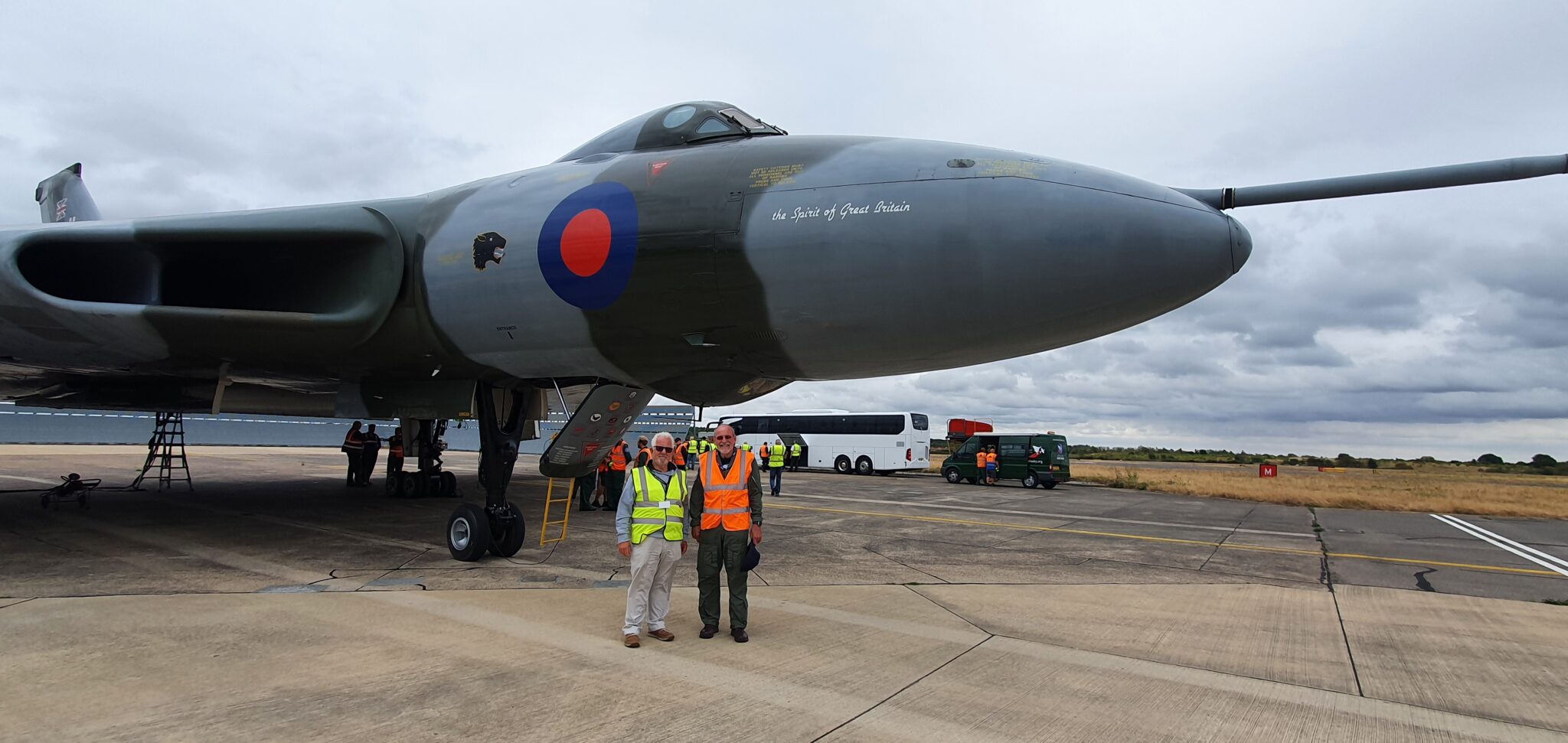
On Sunday 24th July there were two long-overdue reunions. Firstly with XH558, not seen in the flesh since the early 1970’s, and with Adrian Sumner, not seen in the flesh since the late 1980’s!
Invited by Carolyn Cordran (from our mutual Buccaneer Aviation Group (TBAG) involvement), it was such a pleasure to be reunited with the ‘Old Lady’ after such a long absence and to get up close and personal with her. She looks, and sounds, in fine fettle thanks to the amazing work of the Vulcan-to-the-sky volunteers, who can be justifiably proud of their achievement.
I was particularly impressed by the organisation surrounding my visit: the meet-and-greet, the briefings and the bussing to and fro. I was amazed how RAF Finningley had been transformed to an international airport. Indeed, not seen since my time there as a 6FTS navigation instructor, I was only able to recognize the hangars and the Officers’ Mess (scene of many a good party!).
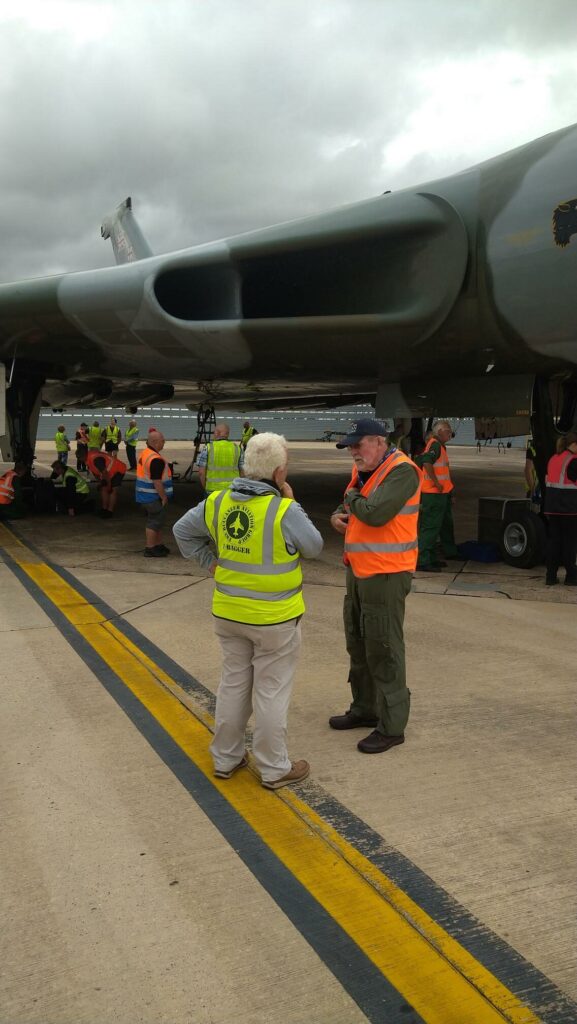
The kind weather allowed many a conversation and reminiscence, particularly with Adrian, and I’m only sad that, living just to the west of London, I am not able to visit more frequently and, perhaps, become a regular volunteer.
Ed Whitaker – A Brief History
After navigation training at RAF Gaydon and RAF Stradishall, I was posted to RAF Lindholme to train as a navigator radar (navrad) for the V-Force. After some 9 months studying the Navigation and Bombing System (NBS) in the classroom, simulator and Hastings trainer aircraft, I travelled ‘down-the-road’ (literally) to RAF Finningley to join a crew at 230 Operational Conversion Unit (OCU). Having studied the NBS, the OCU was more of an aircraft and crew familiarisation task. However, on reflection, the nav training was orientated rather more on specific crew responsibilities than on aircraft systems in general. Nevertheless, in March 1969, I joined my first Vulcan squadron (No 101) at RAF Waddington at the tender age of 20 years.
My navigator plotter (John Barnard – an experience Canberra and Victor man) and I joined an established crew and soon got to grips with squadron life which, of course, included QRA. Indeed, it wasn’t long before our first overseas visit to CAF Goose Bay in Labrador and the following month to Pensacola, Florida (via Offutt AFB, Omaha) for a static display at a US Navy pilot training base. I remember a spirited approach to Sauffley Field which resulted in an overstress of the airframe. I’m not sure how the pilot got away with that one!

Goose Bay and Offutt became regular destinations, enabling us to train in very different environments – low level over the snowy wastes of Northern Canada and low level (US Version – 1000 ft minimum) over the central US States using established ‘Oil-Burner’ routes (name changed subsequently to ‘Olive-Branch during the 1970’s fuel crisis).
In January 1970 (the day after my 21st birthday), we departed on Exercise Sunflower to the Far East. The V-Force was committed to reinforce Singapore under the terms of the SEATO (South East Asia Treaty Organisation) agreement and ‘Sunflower’ was the practice westabout deployment, flying across the US and the Pacific Ocean (via Hawaii, Wake Island and Guam) to land at Tengah on Singapore Island. This was a six-week deployment, involving exercises with the local RAF and RAAF fighter squadrons and a weekend in Hong Kong. We returned, still going west, via Gan (our base in the Maldives), Masirah and Cyprus.
At the end of this tour, I was posted to IX Squadron at Akrotiri, where our destinations were rather more exotic: Teheran, Ankara, Malta, Masirah. But, unfortunately, the end of the tour was marred by the Greek Junta attempted take-over of Cyprus and the subsequent Turkish invasion of the north of the island. IX squadron withdrew to RAF Waddington in January 1975 from where I was posted, initially to RAF Lindholme and subsequently to RAF Finningley, to become an OCU instructor.
After a successful instructional tour, but with relatively little flying and only one overseas trip (!), I was posted on a ground tour to RAF Honington which resulted in my inculcation into the 2-seat fast jet world. One tour on the Buccaneer and one tour on the Tornado GR1 was interrupted with a very enjoyable tour at RAF Finningley as a navigation instructor both on the Dominie and the Jet Provost.
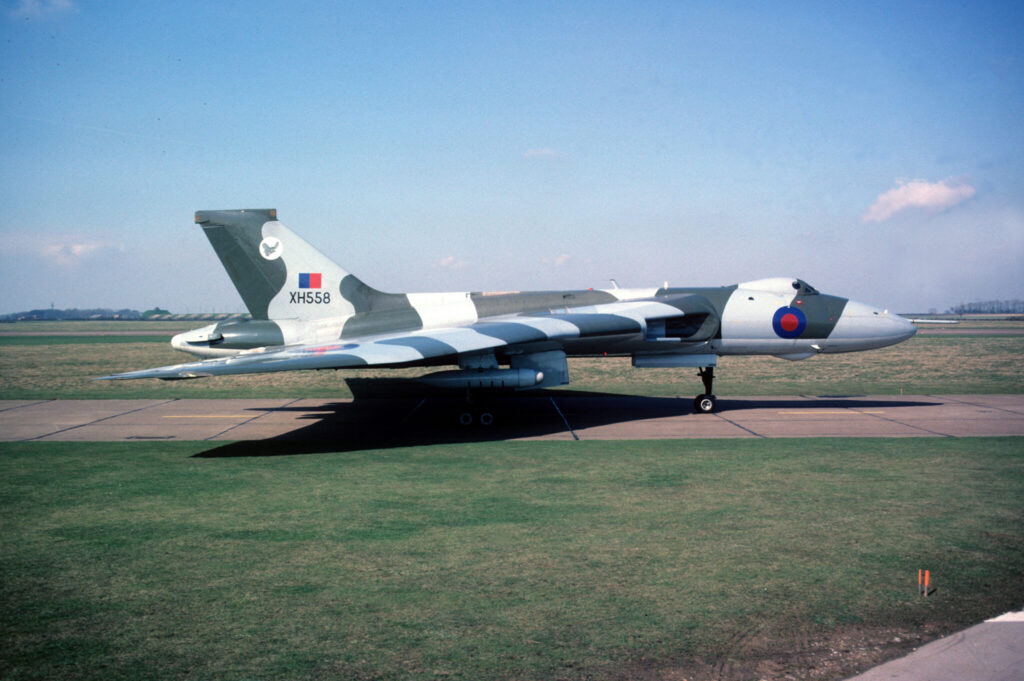
I left the RAF after a sometimes exciting (but never dull) 30-plus years with just under 4500 hours flying time under my belt (2010 hours on the Vulcan) and subsequently had jobs in and around MoD research. Retiring at 65, I can now indulge in much reminiscing!
As to XH558 – I only flew in her twice, in 1970. She had been fitted with smoke-reducing ‘cans’ in the engines and my crew were tasked to trial the modification. Presumably, she was a Waddington-based airframe but must have spent some time in the hands of the engineers. It’s nice to think that I have flown in most of the remaining extant airframes (574 in Newark being the only exception, I think) when I wander around air museums with friends and family. I’m not a great one for boozy reunions but I find it intriguing that when you meet a colleague, not seen for eons, how the years seem to disappear and how the stories flow and come back to life.

On 2 April 1982, Argentina invaded and occupied the Falkland Islands. It was the beginning of a ten-week conflict that ended with the Argentines surrendering
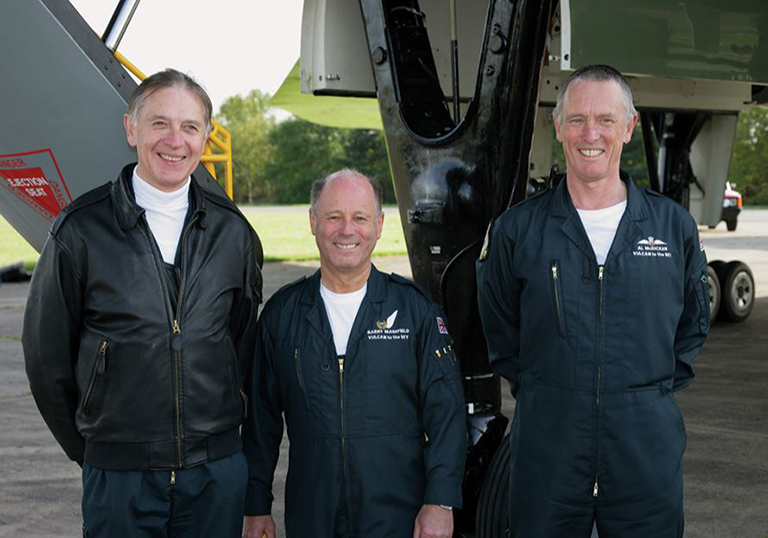
Barry Masefield was the Air Electronics Officer (AEO) for Vulcan XH558 and had flown in this iconic aircraft for over 30 years, also being a

Barry Masefield was the Air Electronics Officer (AEO) for Vulcan XH558 and had flown in this iconic aircraft for over 30 years, also being a
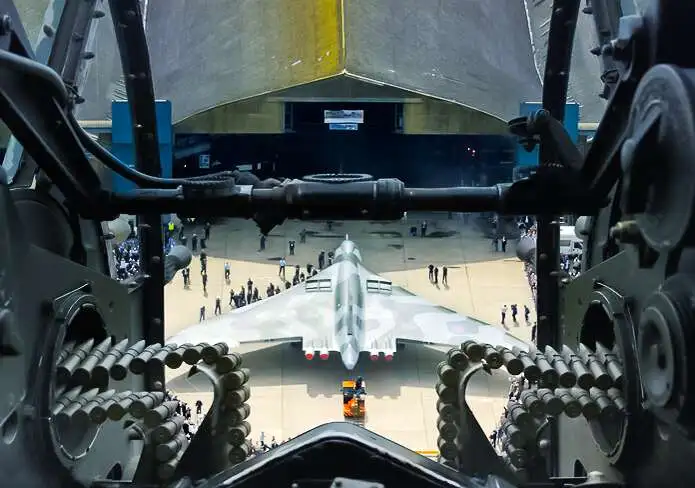
A fresh appeal was launched in March 2004 to reach the Trust’s commitment of 29% of the funding total, required before the HLF would issue